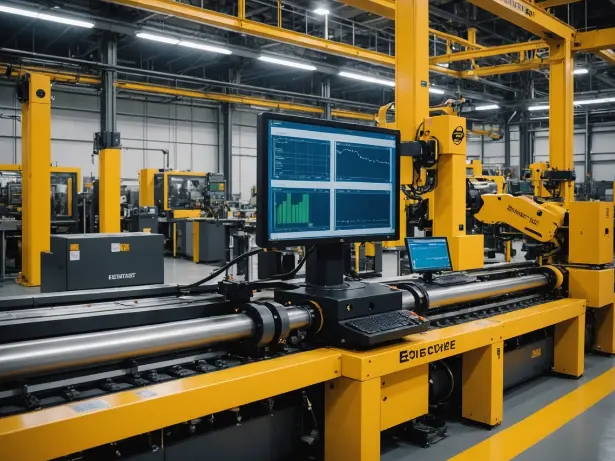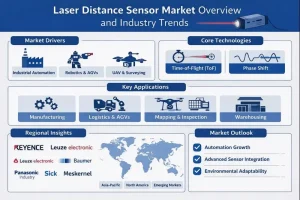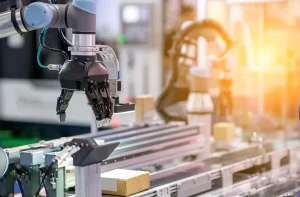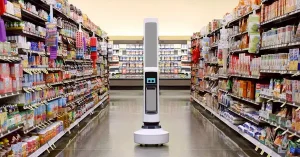Forecast: Growth of Industrial Sensors
Industrial sensors are at the heart of modern manufacturing and industrial automation, playing a critical role in improving productivity, safety, and operational efficiency. As industries worldwide increasingly adopt smart technologies and Industrial Internet of Things (IIoT) solutions, the demand for advanced industrial sensors is expected to skyrocket. This article explores the growth forecast for industrial sensors, key factors driving this trend, and the innovations shaping the future of the sector.
Understanding Industrial Sensors and Their Importance
Industrial sensors are devices designed to detect changes in the environment or in equipment, converting physical parameters such as temperature, pressure, proximity, humidity, or motion into readable signals. These sensors are essential in monitoring and controlling industrial processes, enabling real-time data collection, predictive maintenance, and automated decision-making.
In industries like manufacturing, oil and gas, automotive, aerospace, and pharmaceuticals, sensors help optimize production lines, ensure safety compliance, and minimize downtime. With the rise of Industry 4.0—the digital transformation of manufacturing—industrial sensors have become pivotal components for connecting machines and systems to the digital world.
Factors Driving the Growth of Industrial Sensors
Expansion of Industry 4.0 and IIoT
A significant driver behind the growth of industrial sensors is the expanding adoption of Industry 4.0 initiatives focusing on automation, data exchange, and smart manufacturing. The Industrial Internet of Things (IIoT) connects sensors, machines, and control systems, enabling seamless communication and data analytics. This interconnected environment demands more sensors for precise monitoring and control, directly boosting market growth.
Increasing Demand for Automation and Predictive Maintenance
Automation continues to transform industrial processes. Companies are investing in sensor technologies that can provide accurate, real-time data to facilitate automated systems and robots. Additionally, predictive maintenance—enabled by sensor data analytics—helps industries prevent equipment failure, reduce repair costs, and extend asset life. This trend strongly influences the need for reliable, high-performance industrial sensors.
Regulatory Compliance and Safety Requirements
Stricter regulations on workplace safety and environmental standards are compelling industries to deploy advanced sensor technologies. Sensors that monitor hazardous gases, temperature fluctuations, and machinery conditions help companies comply with these regulations while ensuring worker safety. As compliance complexities increase, the reliance on sophisticated industrial sensors will grow correspondingly.
Technological Advancements in Sensor Design
Ongoing innovations such as miniaturization, wireless connectivity, and improved sensor accuracy are contributing to the widespread use of industrial sensors. Advanced materials and sensor fusion—where multiple sensors work together to enhance data quality—are making sensors more versatile and affordable. These technological strides are opening new applications in harsh environments and highly specialized industrial processes.
Emerging Trends in Industrial Sensors
Several progressive trends indicate the future trajectory of industrial sensors:
- Wireless Sensors and Edge Computing: The shift towards wireless industrial sensors enhances flexibility and reduces installation costs. Combined with edge computing, sensors process data locally, enabling faster decision-making and reducing bandwidth usage.
- Smart Sensors with Integrated AI: Artificial intelligence integration is making sensors smarter, allowing them to analyze data patterns, self-calibrate, and adapt to changing conditions without human intervention.
- Enhanced Durability and Environmental Resistance: Industrial sensors are being designed to withstand extreme temperatures, corrosive chemicals, high pressure, and vibration, expanding their usability across challenging industrial environments.
- Energy Harvesting Sensors: Innovative sensors that harvest ambient energy (such as vibration or thermal gradients) are gaining attention for applications where battery replacement is impractical.
Market Forecast and Opportunities
According to industry analysts, the industrial sensors market is projected to grow at a compound annual growth rate (CAGR) of more than 8% over the next five years. This expansion is driven by the integration of smart manufacturing systems and the increasing emphasis on operational efficiency.
Key regions fueling market expansion include North America, Europe, and Asia-Pacific, with the latter showing accelerated industrialization and digital transformation initiatives. Small and medium enterprises (SMEs) are also adopting sensor technologies to stay competitive, further broadening the market base.
Industries such as automotive manufacturing are investing heavily in sensors for autonomous vehicle production lines, while the energy sector leverages sensor data for renewable energy plant monitoring and optimization.
Challenges and Considerations
Despite promising growth, the industrial sensors market faces some challenges. Data security is a primary concern as more sensors connect to networks, raising the risk of cyberattacks. Compatibility with legacy systems remains a technical hurdle for many companies transitioning to smart factories. Additionally, the initial cost of deploying advanced sensor networks can be a barrier for smaller manufacturers.
Conclusion
The growth forecast for industrial sensors paints a vibrant picture of a technology sector deeply embedded in the future of industrial innovation. As industries seek to optimize operations, improve safety, and embrace digital transformation, the demand for reliable, smart, and interconnected sensors will continue to rise. With ongoing advancements and expanding applications, industrial sensors are poised to be a cornerstone of the global industrial landscape for years to come.




